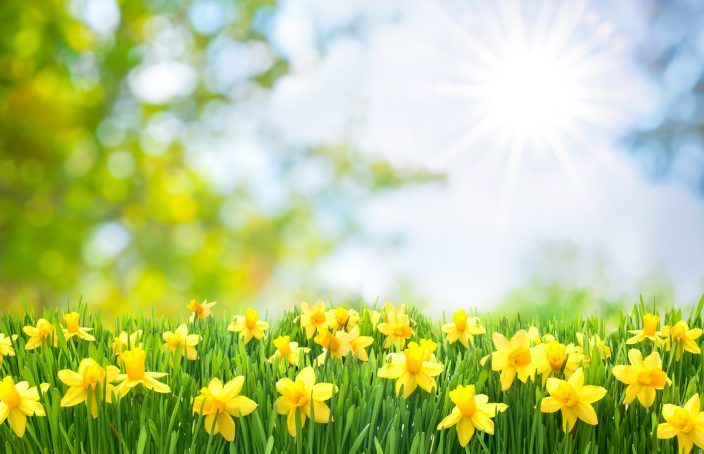Although it might not seem so, with all of this UK rain, spring is finally here. And with a change in season comes a change in what fruit and vegetables there are on offer.
Typically, our supermarkets stock all fresh foods year-round, meaning we tend to ignore our very own growing seasons. But eating seasonally has many benefits, one being they are rich in nutrients, but most importantly they taste even better!
Below we have devised a list of our favourite low carb fruits and vegetables that are in season throughout spring.
Rhubarb
Carbs/100g: 0.8g
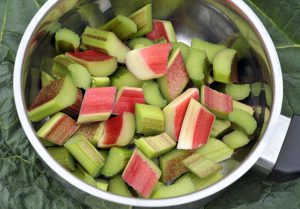
If you want to find a way to curb that sweet tooth without hindering your low carb goals, then look no further. Rhubarb is a great ingredient for making low carb chia jam or simply stewing and pouring over yoghurt or cream. It contains an array of nutrients including vitamin K, vitamin C and vitamin A. Did you know that rhubarb contains the same amount of calcium as milk?
Something you might not know is that rhubarb is in fact a vegetable and its leaves contain a large quantity of oxalic acid, making them toxic. It is important to ensure you remove the rhubarb leaves and discard them, before cooking or consumption. We must also point out, that raw rhubarb is intensely tart and should definitely be eaten cooked.
Asparagus
Carbs/100g: 2g
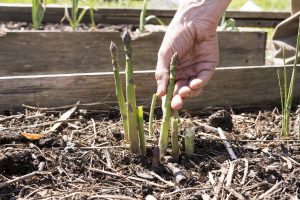
With only 2g of carbohydrate per 100g, asparagus is one of our favourite low carb vegetables. Made up from a combination of fibre, vitamin A, vitamin E, zinc, magnesium, selenium, riboflavin, iron, vitamin B6, copper, niacin and manganese, it is packed full of goodness.
Cabbage
Carbs/100g: 4.4g
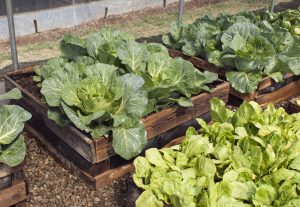
Cabbage is a cruciferous vegetable, high in an array of antioxidants, that have been associated with protecting against a number of cancers. They have also been linked to reductions in LDL levels, better understood as our ‘bad cholesterol’. In addition to this, cabbage contains significant levels of vitamin K which has been linked to the prevention of Alzheimer’s. Cabbage is also a good source of vitamin C, B1, B5, B6, folate, calcium, magnesium, phosphorus, potassium and fibre. The extent of this list portrays just how powerful this little vegetable is.
Cauliflower
Carbs/100g: 4.4g
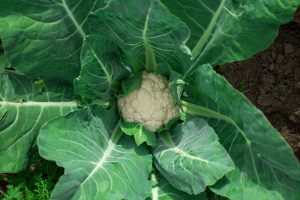
Cauliflower is another cruciferous vegetable and is high on our favourites list of low carb vegetables. As well as cabbage, cauliflower is also a good source of phytonutrients, vitamin C and vitamin K. It also contains thiamine, riboflavin, niacin, phosphorus and magnesium.
Cucumber
Carbs/100g: 1.2g
Whilst we all tend to think of cucumber as a vegetable it is in fact a fruit. Mostly made up from water, cucumbers also contain a variety of important nutrients, including vitamin K, vitamin C, vitamin B5, magnesium and potassium. Their anti-inflammatory properties and low carbohydrate content make them a regular appearance in a low carb diet. In addition, cucumbers contain cucurbitacins, a type of phytonutrient known as triterpenes, which have been shown to inhibit the growth of cancer cells.
Pak choi
Carbs/100g: 2.18g
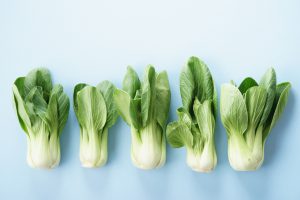
Pak choi is a great accompaniment to many dishes, especially those that are Asian inspired. We love serving pak choi with low carb satay chicken, salmon or stir-fry. Rich in vitamin A, C and K, pak choi also provides us with magnesium, calcium, potassium, iron and manganese. This really is a vegetable that should be a part of every nutritious diet. The presence of vitamin A and vitamin C in pak choi makes it a great food to consume in order to protect against inflammation and ensure adequate immune functioning.
Purple sprouting broccoli
Carbs/100g: 2.6g

Yes, another cruciferous vegetable! Purple sprouting broccoli can be recognised for its luxurious, deep, purple branches. In addition to vitamin A, vitamin C, iron, folic acid and calcium, this vegetable contains the phytochemical sulforaphane, which is believed to help in the prevention of cancer, heart disease, diabetes and osteoporosis. It is best eaten when young and tastes great as a simple side dish, drenched in butter. It is especially delicious with a Sunday roast.
Radishes
Carbs/100g: 1.9g
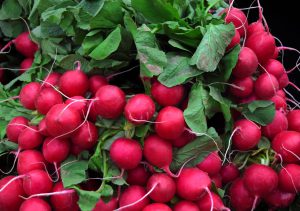
Ever wondered how to spruce up your salads? Well, radishes come highly recommended. Their peppery, fresh and crunchy taste and texture make them the perfect ingredient. An added bonus is that these little nutritional bullets provide us with fibre, folate, riboflavin, potassium, vitamin B6, magnesium, calcium and manganese. They are also a good source of vitamin C, helping to protect against inflammation and disease. Did you know that radishes are a natural diuretic, meaning they help in the functioning of our kidneys, as well as having antibacterial and antifungal properties? With only 1.9g carbs per 100g, you really can’t go wrong.
Spinach
Carbs/100g: 0.2g
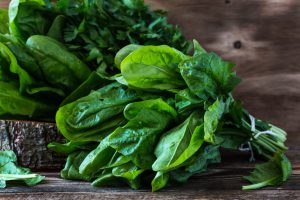
Spinach is extremely nutrient dense and is a great all-round vegetable. It is rich in fibre, vitamin A, C, E, K, B6, folate, iron, magnesium, calcium, potassium, copper, manganese and phosphorus. It is even a good source of protein! The antioxidant properties of spinach make it a worthwhile food to include in your diet, as it helps to protect against free radicals, thus preventing inflammation and disease.
Spring greens
Carbs/100g: 3.1g

Part of the brassica family, spring greens are a type of cabbage, however their shape resembles that of a cos lettuce. Packed full of vital nutrients, including vitamin C and vitamin K, spring greens are a great vegetable to include in your cooking. They are especially tasty drenched in salty butter. In addition, spring greens contain chemicals such as sulforaphane and indoles, which are understood to have anti-carcinogenic properties.
Spring onions
Carbs/100g: 3g
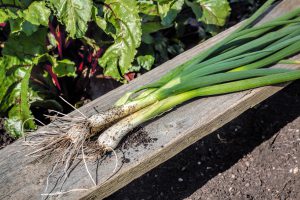
Spring onions are a slightly lower carb alternative to onions, still providing ample flavour and rich in nutrients. Spring onions are high in vitamin A, B12, C, K and thiamin. They also contain plenty of fibre, potassium, magnesium, phosphorus, copper, chromium and manganese, as well as containing health promoting compounds, like the flavonoid quercetin.
Watercress
Carbs/100g: 0.4g
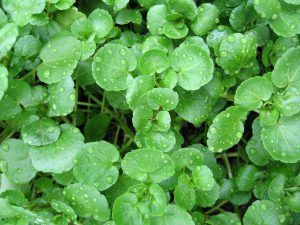
Watercress is a vegetable we don’t often think of, however it contains over 15 essential nutrients. Although it is extremely low in both calories and carbohydrates, it is incredibly nutrient dense and boasts a significant number of phytonutrients. It is the phytonutrient gluconasturtiin, that gives it its peppery taste. Interestingly, vitamin K is the nutrient most dominantly found in watercress. Vitamin K is understood to play an important role in the formation of bones and has been found to be helpful in the prevention of Alzheimer’s disease, as it protects against neuronal damage. As with many other vegetables, watercress is a rich source of vitamin A and C and surprisingly contains more vitamin C than an orange.
